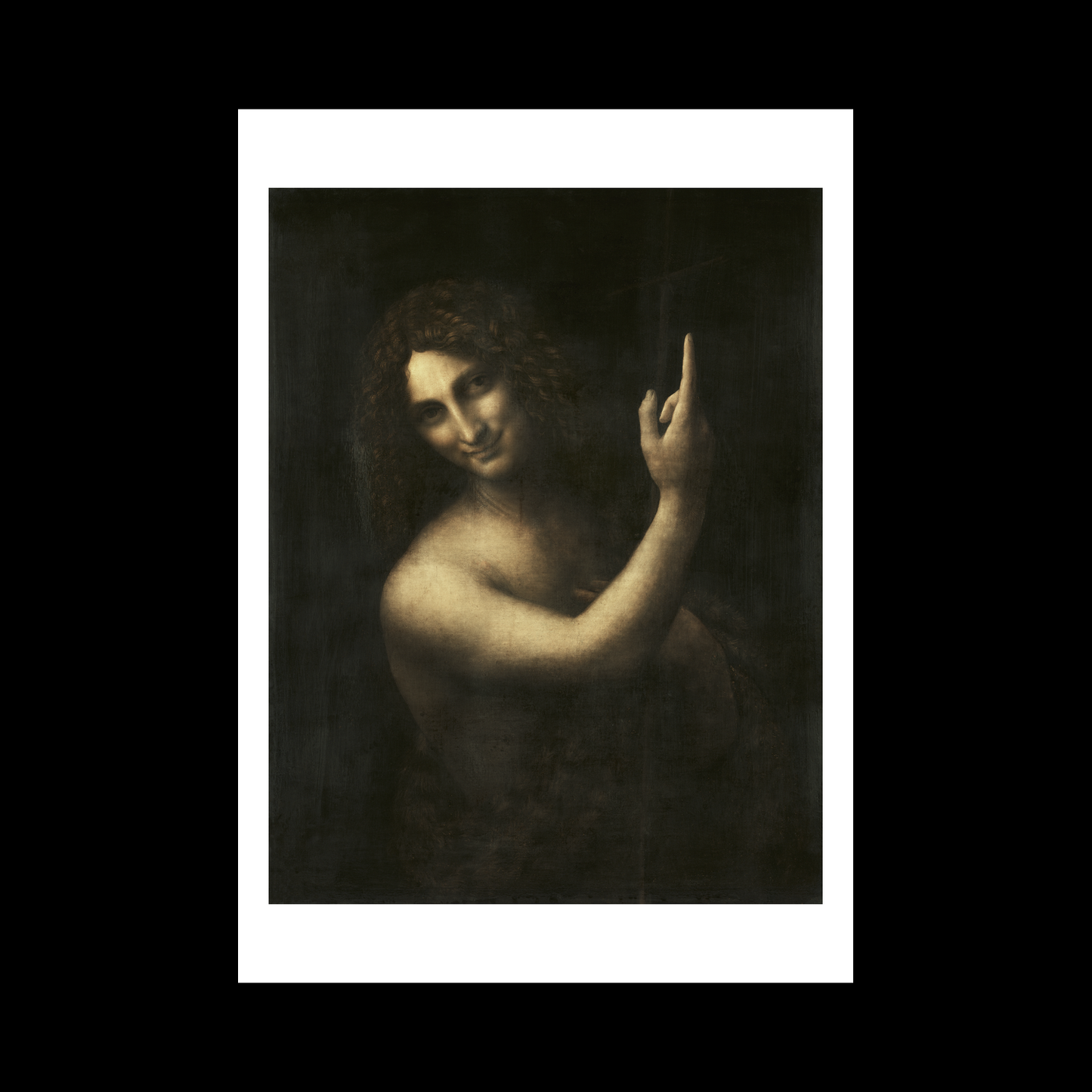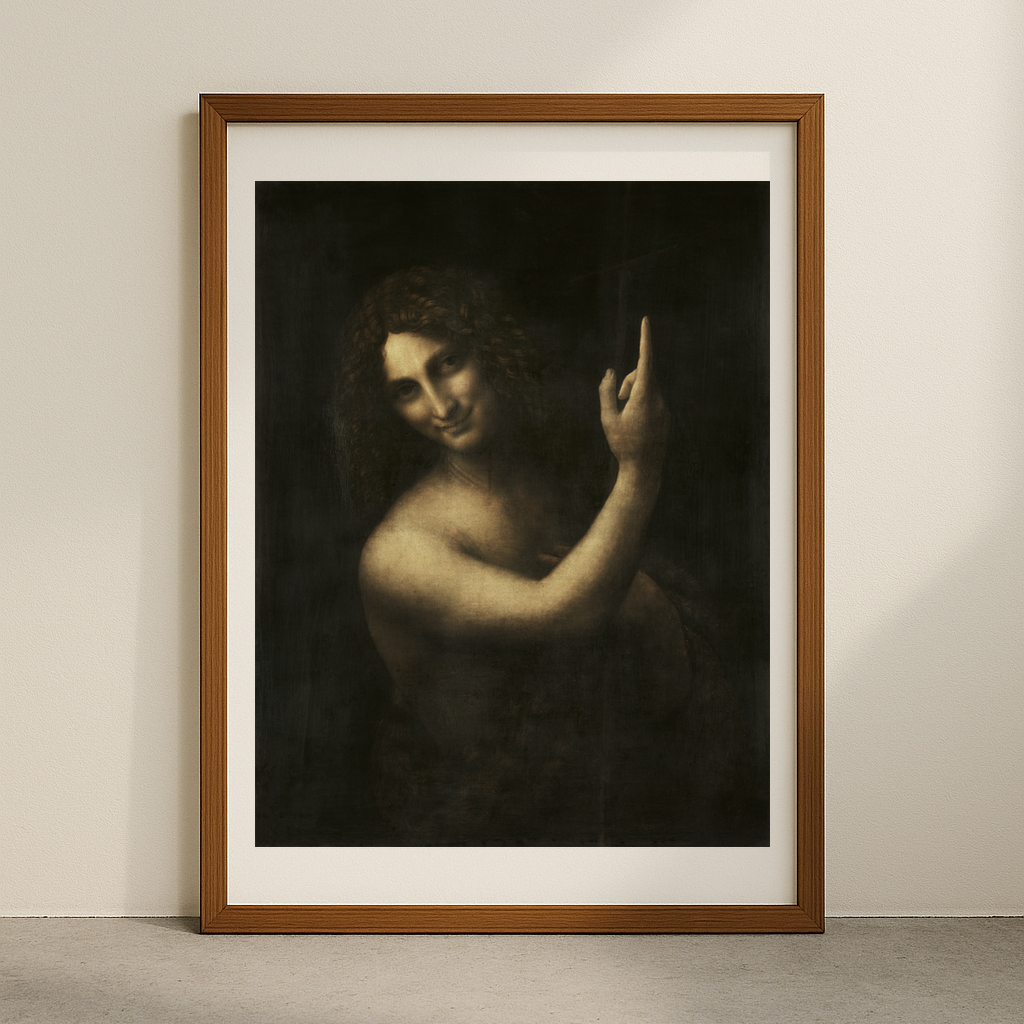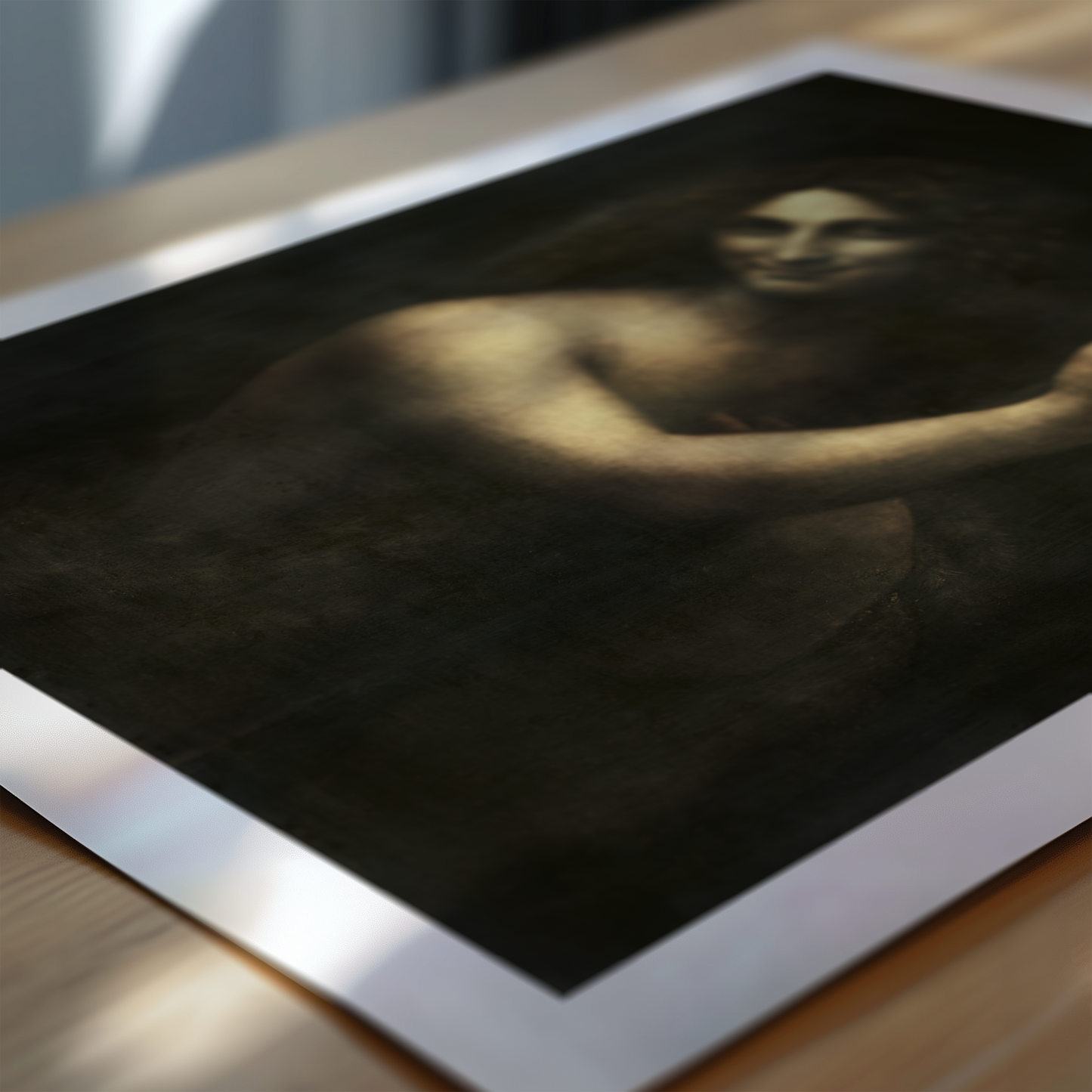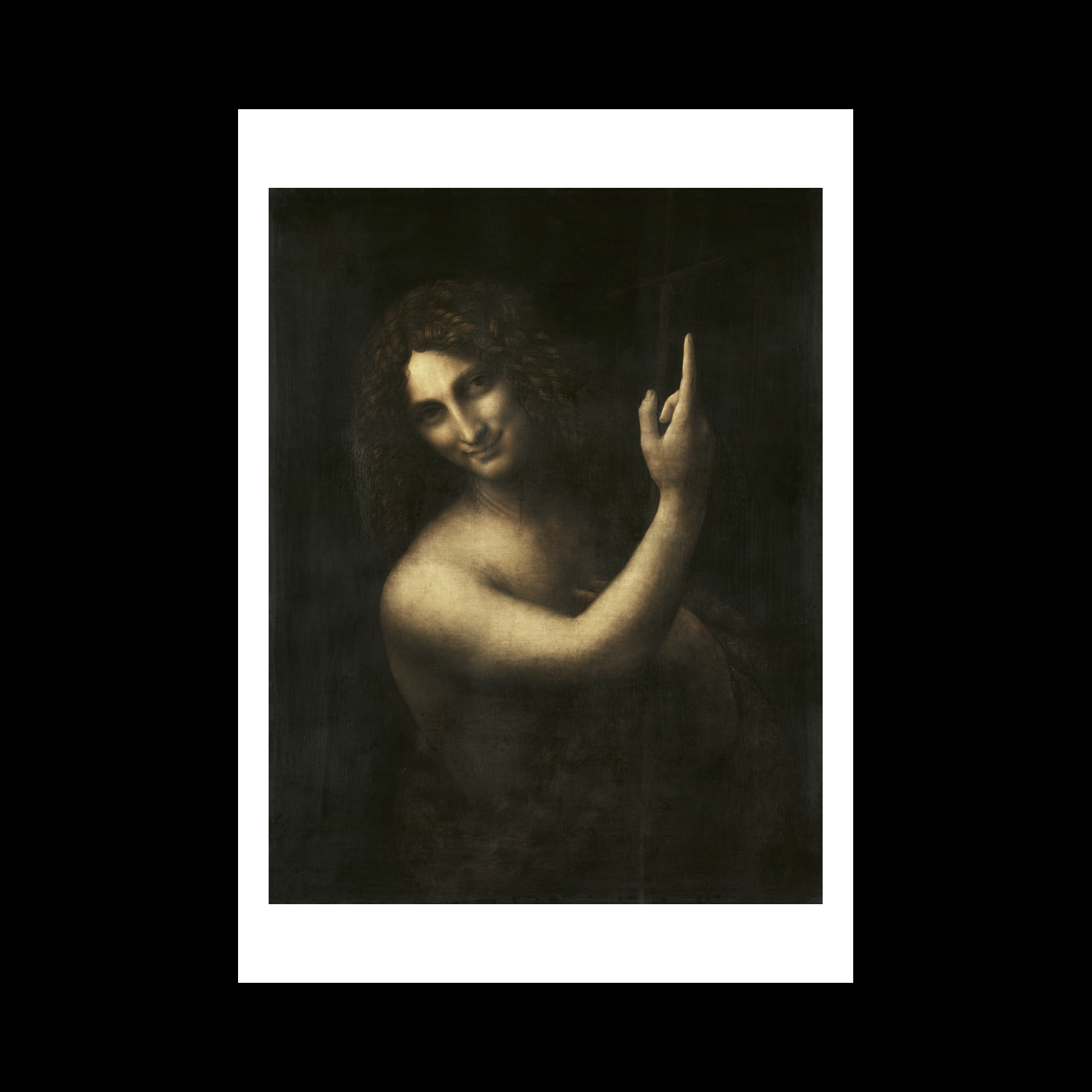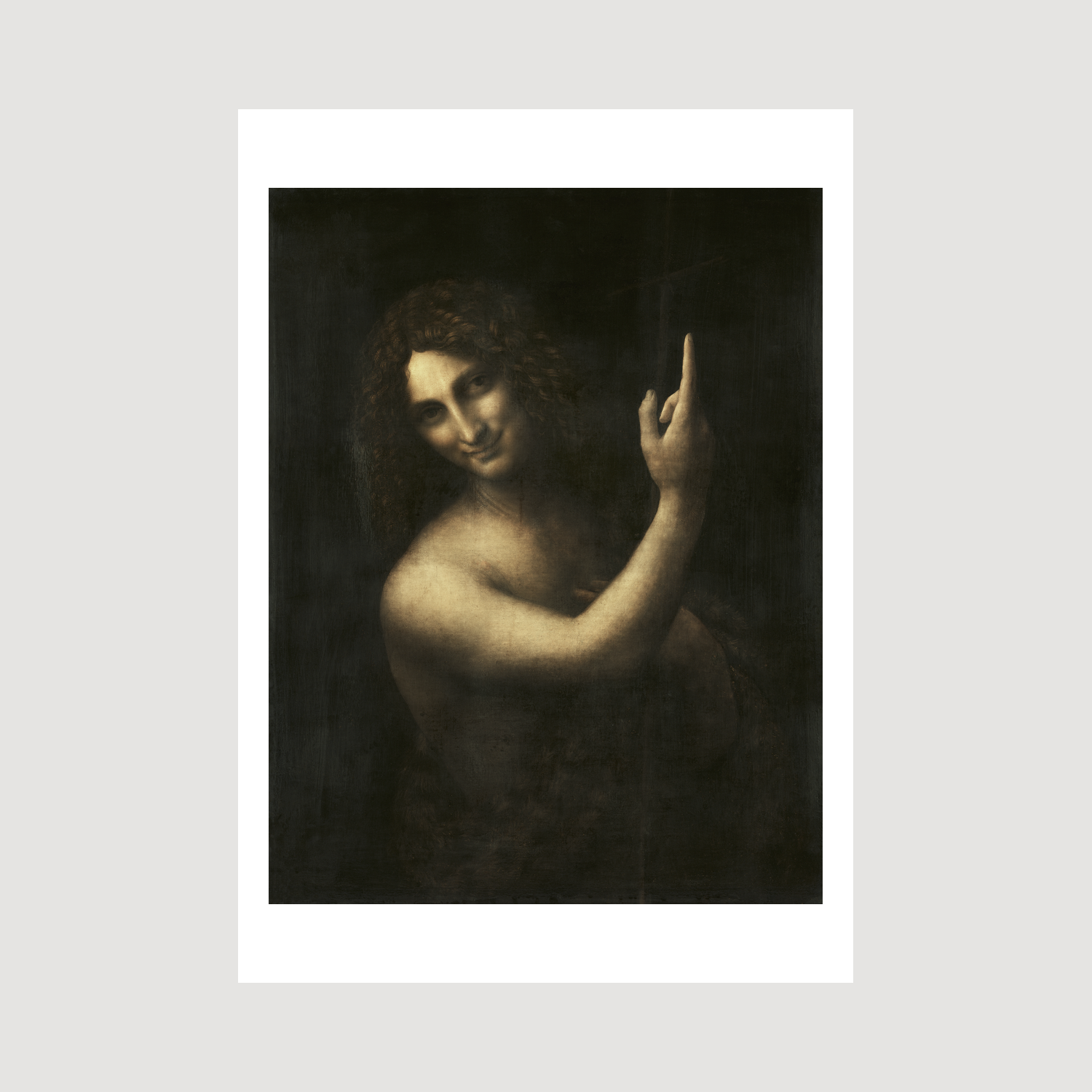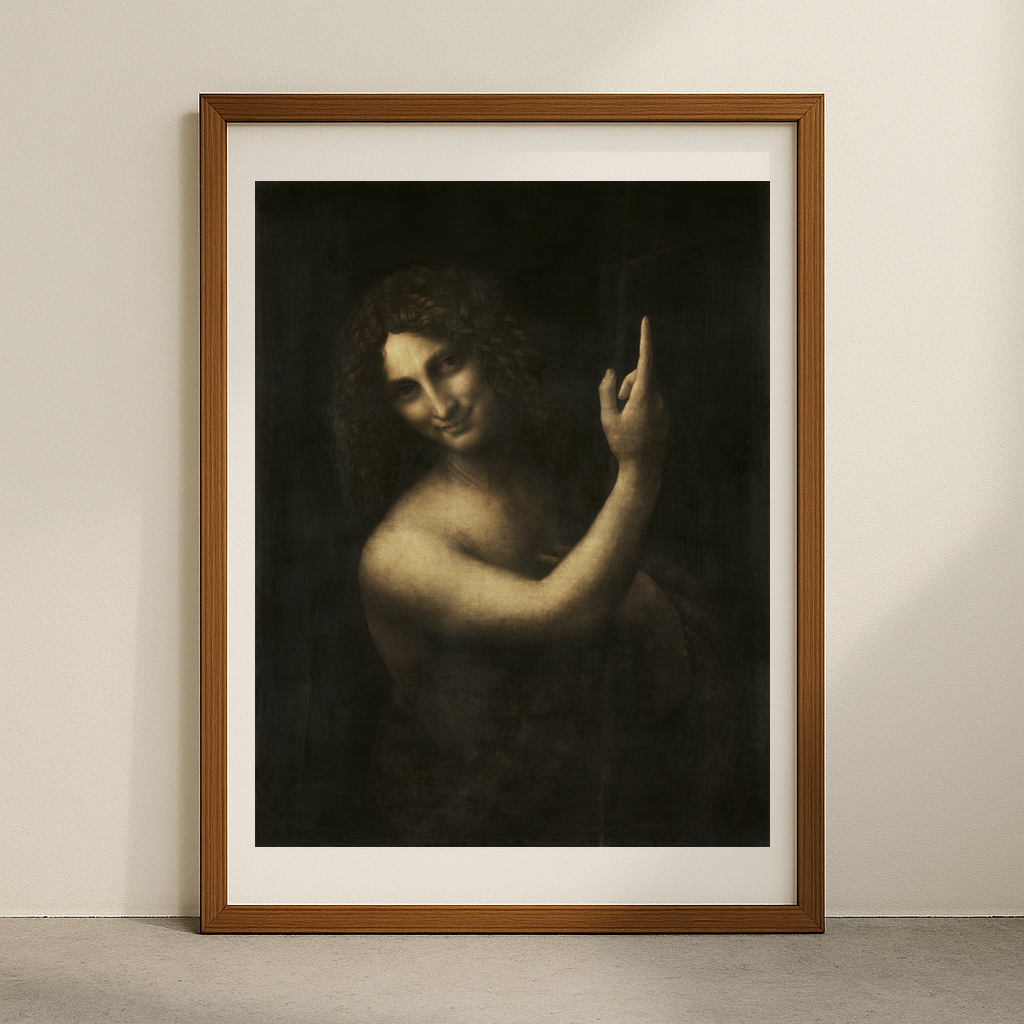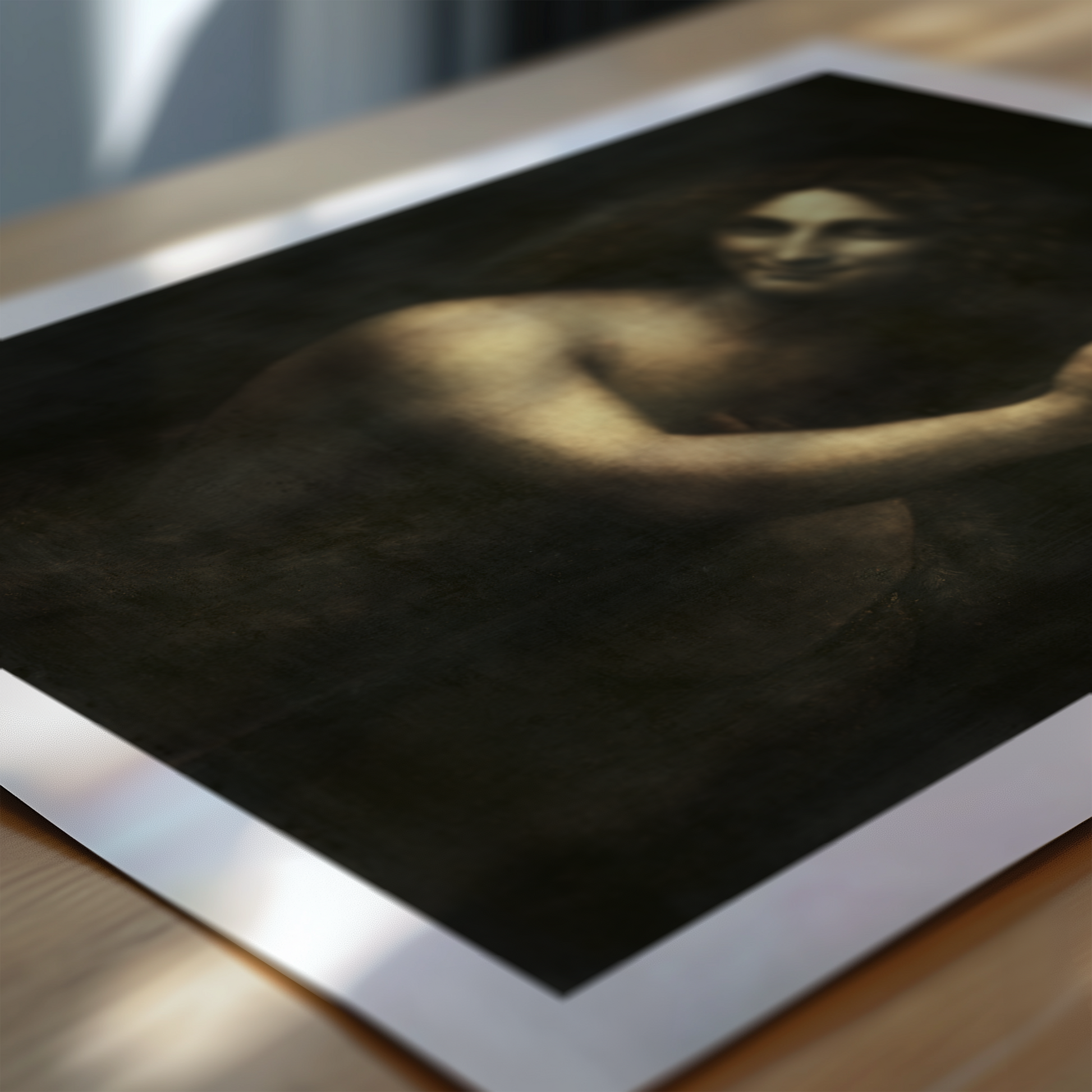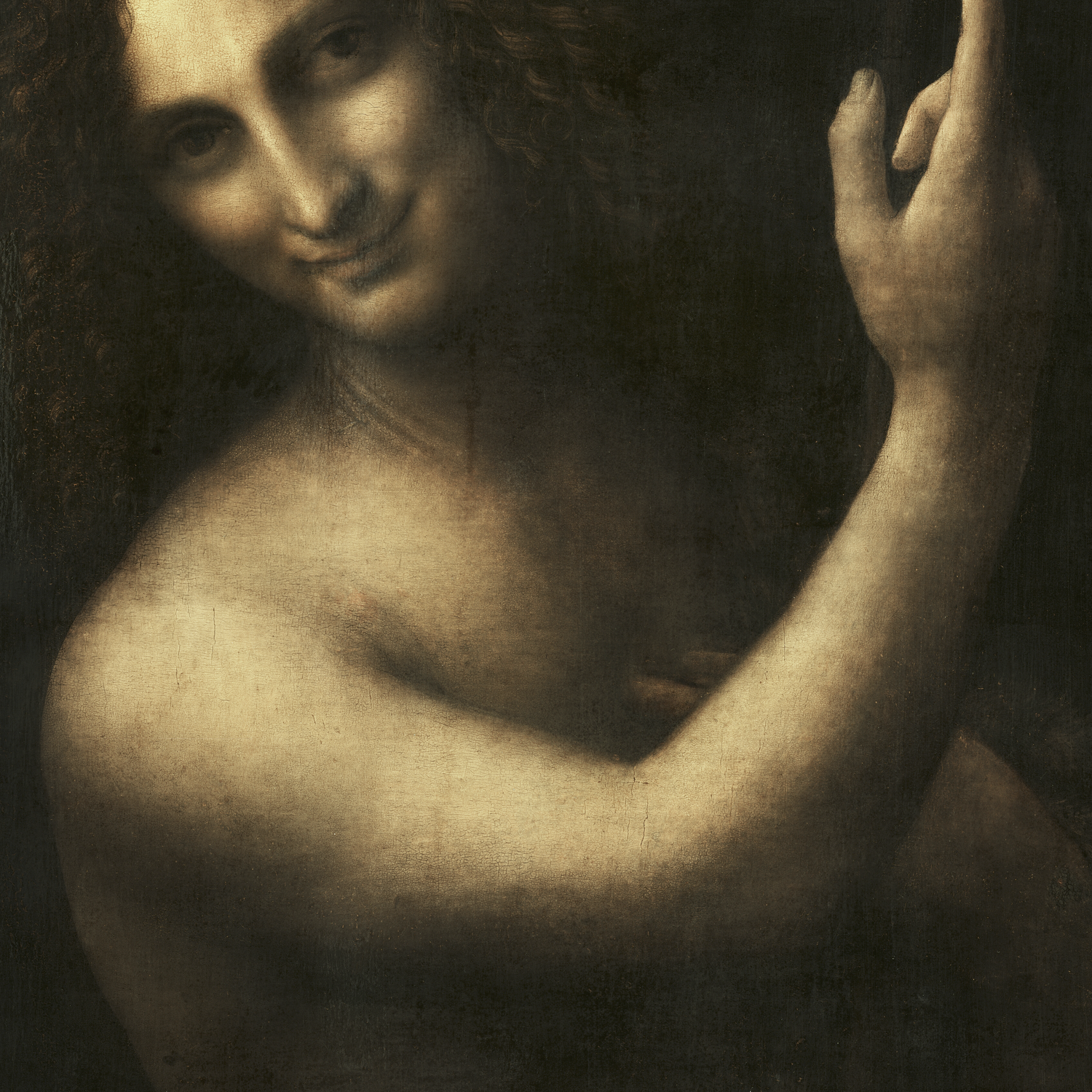1
/
of
6
Saint John the Baptist (1513-1516)
Saint John the Baptist (1513-1516)
Regular price
£12.45 GBP
Regular price
Sale price
£12.45 GBP
Taxes included.
Quantity
Couldn't load pickup availability
Leonardo da Vinci's 'Saint John the Baptist' (1513-1516) stands as one of the artist's final paintings, showcasing his mastery of sfumato technique - the subtle gradation of light and shadow that creates an ethereal, smoke-like effect. The mysterious half-length portrait depicts Saint John emerging from darkness, his right hand pointing heavenward while his left arm crosses his chest. The figure's androgynous features, enigmatic smile, and the dramatic chiaroscuro lighting exemplify da Vinci's fascination with human expression and anatomical precision.
What makes this work particularly intriguing is da Vinci's unconventional interpretation of the biblical figure. Rather than portraying Saint John in his traditional wilderness setting with animal skins and a reed cross, the artist presents him in a deeply personal and psychological manner. The subject's curly hair, illuminated skin, and penetrating gaze create an almost hypnotic effect, while the dark background emphasises the spiritual nature of the subject.
The painting reflects da Vinci's late-career style, where he moved away from detailed backgrounds to focus on the human form and its emotional impact. Created during his time in Rome under the patronage of Pope Leo X, this work demonstrates the artist's experimental approach to religious imagery. The innovative use of light and shadow, combined with the subject's ambiguous expression, continues to spark discussions about its deeper meanings and da Vinci's artistic intentions, making it a compelling study of Renaissance portraiture and religious symbolism.
View full details
What makes this work particularly intriguing is da Vinci's unconventional interpretation of the biblical figure. Rather than portraying Saint John in his traditional wilderness setting with animal skins and a reed cross, the artist presents him in a deeply personal and psychological manner. The subject's curly hair, illuminated skin, and penetrating gaze create an almost hypnotic effect, while the dark background emphasises the spiritual nature of the subject.
The painting reflects da Vinci's late-career style, where he moved away from detailed backgrounds to focus on the human form and its emotional impact. Created during his time in Rome under the patronage of Pope Leo X, this work demonstrates the artist's experimental approach to religious imagery. The innovative use of light and shadow, combined with the subject's ambiguous expression, continues to spark discussions about its deeper meanings and da Vinci's artistic intentions, making it a compelling study of Renaissance portraiture and religious symbolism.
